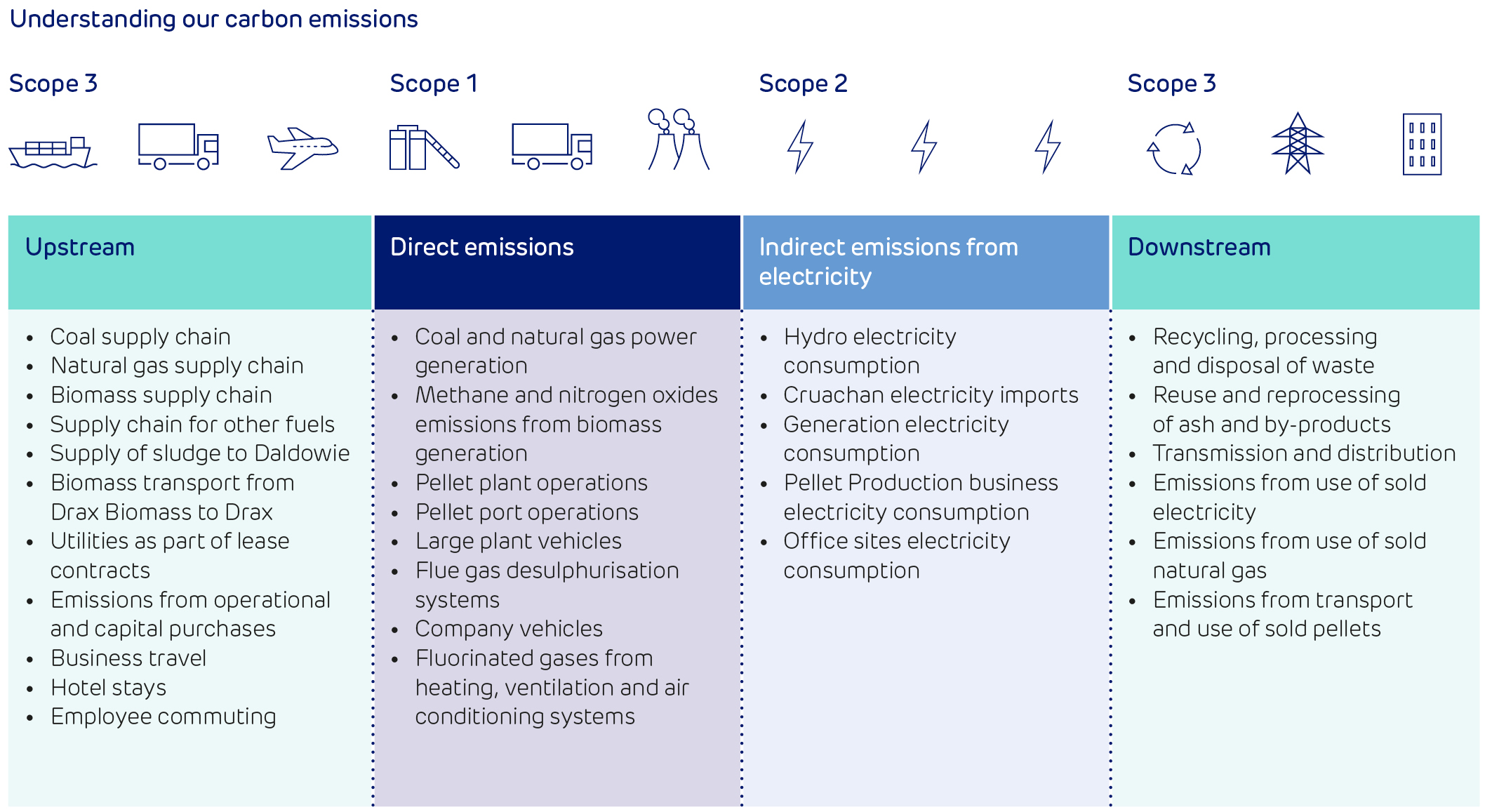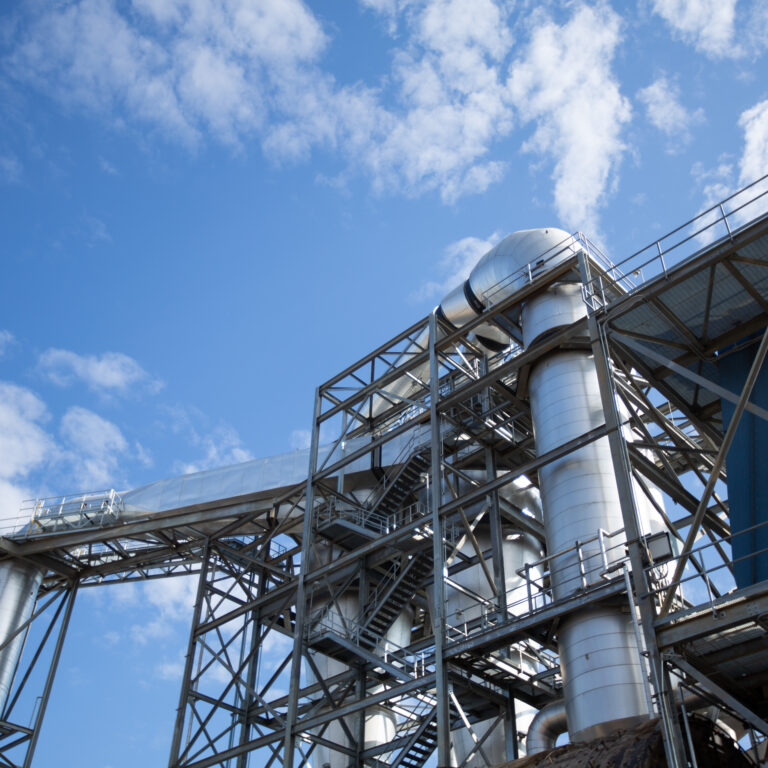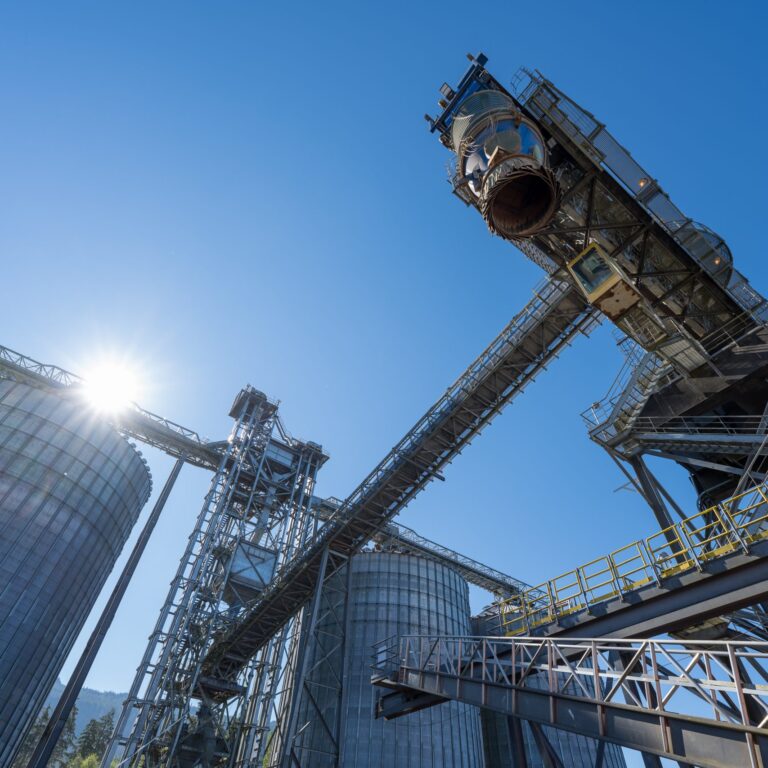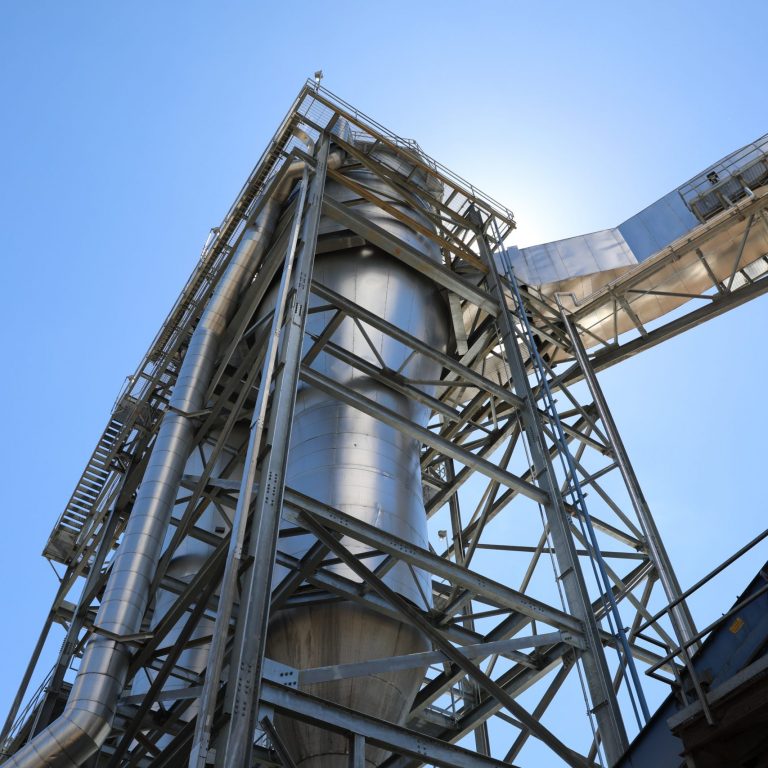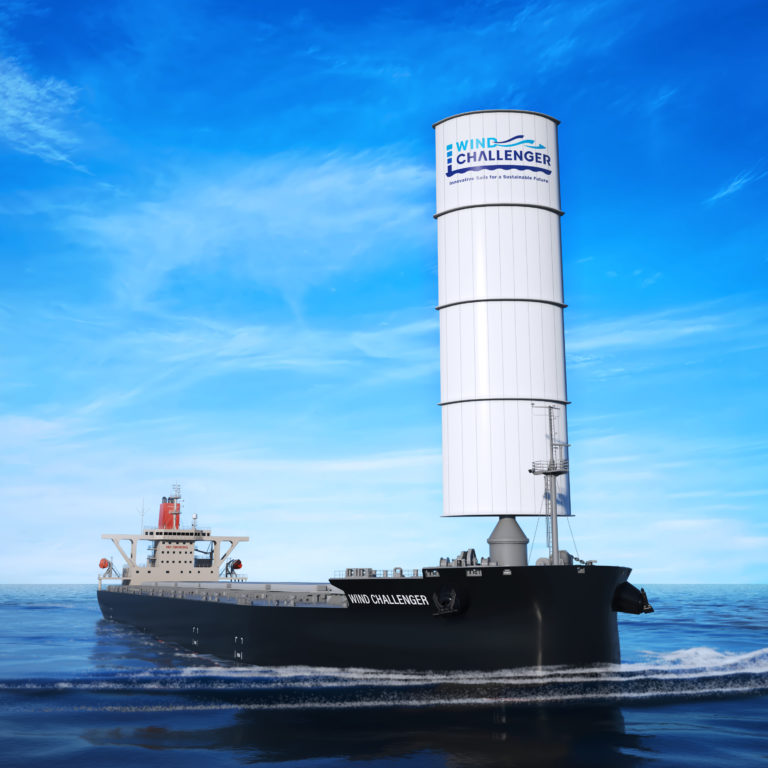Tackling climate change is at the heart of our purpose and we are committed to helping the UK and the wider world to achieve its climate change targets.
Our carbon negative ambition
Our purpose – to enable a zero carbon, lower cost energy future – means Drax is investing to play a leading role in the UK’s journey to a net zero economy. In December 2019, at COP25 in Madrid, we set an ambition to be carbon negative by 2030. This purpose and ambition drive our commitment to address climate change. Since 2012, the Group’s actions have reduced our generation Scope 1 and 2 carbon emissions by approximately 99%.
At Drax, we have set an ambition to be carbon negative by 2030 by removing more carbon from the atmosphere than we produce (Scope 1 and 2), helping the UK achieve its net zero target. By then, BECCS at Drax could deliver up to 8Mt of CO2 removals a year. This would deliver over 15% of the carbon removals the UK requires to achieve net zero by 2050, according to figures provided by the CCC in their 2019 Net Zero Report.
We aim to achieve our ambition of being carbon negative by 2030, by reducing our emissions as far as possible Group-wide, while using removals delivered through BECCS to neutralise our remaining
emissions. In doing so, we will also support the UK Government and other businesses to achieve net zero carbon emissions. We are committed to the Science Based Targets initiative (SBTi) and have submitted our targets for validation. To align with our SBTi targets, Drax set a new baseline for our carbon emissions data, to ensure comparability to our 2020 base year.
A UK leader in dispatchable, renewable generation
The UK’s plans to achieve net zero by 2050 will require the electrification of sectors such as heating and transport systems, resulting in a significant increase in demand for electricity. We believe that intermittent renewable and inflexible low-carbon energy sources – wind, solar and nuclear – could help meet this demand. However, this will only be possible if the remaining power sources can provide the dispatchable power and non-generation system support services required to ensure security of supply and to limit the cost to the consumer.
Long-term biomass generation and pumped storage hydro can provide these increasingly important services and we are developing an option for new pumped storage – the expansion of Cruachan Power Station – to provide an additional 600MW of dispatchable long-duration storage to the power system. A planning application was submitted in May 2022, and any investment remains subject to the right investment infrastructure and support.
The location, flexibility and range of services Cruachan can provide makes it strategically important to the UK power system. A final investment decision could be taken in 2024 and the development operational by 2030. Any investment decision will depend on the right regulatory framework.
Carbon and energy performance
In line with TCFD Guidance on Metrics, Targets and Transition Plans (October 2021), we disclose the following climate-related metrics:
| Unit | 2022 | 2021 | 2020 | |
|---|---|---|---|---|
| Carbon Emissions | ||||
| Generation CO2 emissions (1) | ktCO2e | 310 | 525 (7) | 2,682 (7) |
| Group total scope 1 (2) | ktCO2e | 336* | 932 | 2,762 |
| Group total scope 2 (location-based) (3) | ktCO2e | 333* | 323 | 318 |
| Group total scope 2 (market-based) (3) | ktCO2e | 332* | 323 | 318 |
| Group total scope 1 and 2 (6) | ktCO2e | 669* | 1,255 | 3,080 |
| Proportion of Group emissions within the UK | % | 51* | 78 | 95.3 |
| Group total scope 3 (4) | ktCO2e | 3,123* | 3,121 | 3,135 |
| Biologically sequestered carbon (5) | ktCO2e | 12,130 | 13,415 | 13,273 |
| Carbon intensity | ||||
| Generation emissions per GWh of electricity generation | tCO2/GWh | 23* | 33 (7) | 143 (7) |
| Group emissions per GWh of electricity generation (6) | tCO2e/GWh | 49* | 78 | 164 |
| Total energy consumption | ||||
| Group total energy consumption | kWh | 5,232,723,625* | 44,112,891,484 | 48,253,807,865 |
| Group total energy consumption within the UK | kWh | 680,178,336 | 40,112,110,277 | 47,090,524,296 |
Note: Carbon emissions are reported against a criterion of operational control. Carbon emissions are reported in units of carbon dioxide equivalent (CO2e) and include all greenhouse gases as required by the GHG Protocol. For the basis of reporting see www.drax.com/sustainability
(1) Generation emissions covers the total direct emissions from Scope 1 and indirect emissions from Scope 2 activities across our Generation sites
(2) Group total Scope 1 covers all direct emissions from our own business operations, across all sites
(3) Group total Scope 2 covers all indirect emissions associated with our electricity and heat consumption, across all sites
(4) Group total Scope 3 excludes ‘downstream leased assets’; and categories ‘end of life treatment of sold products’, ‘franchises’ and ‘investments’ are not applicable
(5) The biogenic carbon emissions resulting from generation are counted as zero in official reporting to both UK authorities and under the UK Emissions Trading Scheme as the use of sustainable biomass is considered to be CO2 neutral at the point of combustion. This methodology originates from the United Nations Framework Convention on Climate Change
(6) Group emissions are total Scope 1 and 2 emissions as reported
(7) 2021 and 2020 figure was based on the Scope 1 kgCO2 EUETS value of Drax Power Station and Daldowie only
* Limited external assurance by LRQA (qualified opinion) using the assurance standard ISAE 3000 and based on Drax using the Corporate Greenhouse Gas Protocol, for 2022 data as indicated. For assurance statement and basis of reporting see www.drax.com/sustainability





